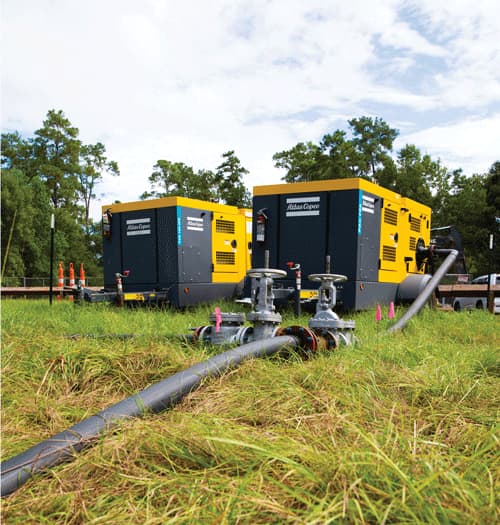
Nothing lasts forever, and sewer systems are certainly no exception. Sewer pipes are often in need of maintenance, repair or replacement to prevent leakage, spillage or overflow. For a bypass operation to succeed—where the project is executed quickly and efficiently with minimal public disruption—it is critical that the proper equipment be employed, especially the proper pumps.
1. Start With a Plan
Bypasses can be complex, and the consequences of a mismanaged operation can be significant on workers, equipment and the surrounding environment. Therefore, it is essential that the project begins with thoughtful planning. A helpful first step in planning is to visit and assess the job site. Think of it as scouting the opposing team. Make notes on what is seen and start thinking about what the system will look like. This way, there are no surprises. Because a sewer bypass involves pumps, piping and heavy equipment, consideration must be given to the impact that the project brings to the surrounding area, especially in the event of an unexpected spill. Precautionary measures, such as the installation of backup pumps, discharge line gate valves and a containment berm, should be built into the preparation.
Additionally, urban areas can present a host of challenges, not just in terms of disruption but also in terms of access. Make sure there is a careful plan for the movement of personnel, materials and equipment in densely populated, high-activity areas.
2. Select the Right Pump
Now, the most critical component of a bypass system: the pumps. Often, a single pump is not sufficient to provide the needed capacity, so a bypass operation will require multiple pumps working together. Another reason why multiple pumps are common is that a backup system will ensure that operations can continue even in the event of an unanticipated occurrence, such as unexpected high flows, primary system failure or power loss. In addition, many municipalities require at least one backup pump equivalent to the largest pump in the system.
To determine the most efficient bypass pump, it is important to consider several factors. Among them are static suction lift, wastewater type, sewage level within the pipeline, discharge point and anticipated maximum peak flow. These factors will determine the
type and number of pumps that the project requires.
Because bypass work demands a pump that can handle a large volume of liquids with solids in suspension, self-prime at depths of over 20 feet and output for the needed capacity in challenging conditions, the most commonly used pumps are centrifugal self-priming or centrifugal submersible pumps.
3. Keep That Pump Operating Efficiently
Take a few basic steps to help ensure that your bypass system operates properly and safely. Continually monitor every aspect of the system, especially pumps. Make certain that the equipment is configured to operate safely and efficiently by watching levels, such as coolant temperature, fuel, oil pressure, flow rate, suction and discharge pressure. Monitor the priming, suction and discharge systems. If operating in colder temperatures, special consideration is needed to prevent the pump and piping from freezing.
4. Consult a Professional
While this is by no means a comprehensive guide to pump selection when transferring wastewater in a sewer bypass, this will hopefully provide users with a snapshot of the challenges as well as some of the critical factors to consider when choosing a pump.
Start by gathering information on the site. Then, consult with a pump professional who can advise in selecting the proper pump for the job, taking all
the critical specifications into consideration. If not managed properly, a sewer bypass project can present a host of problems. Get the guidance you need to get it done efficiently and, most importantly, safely.

